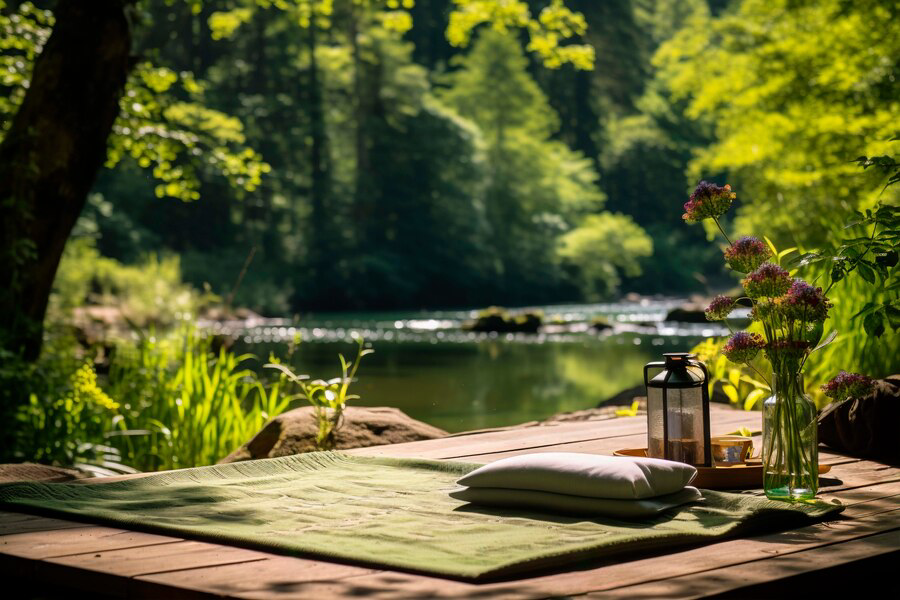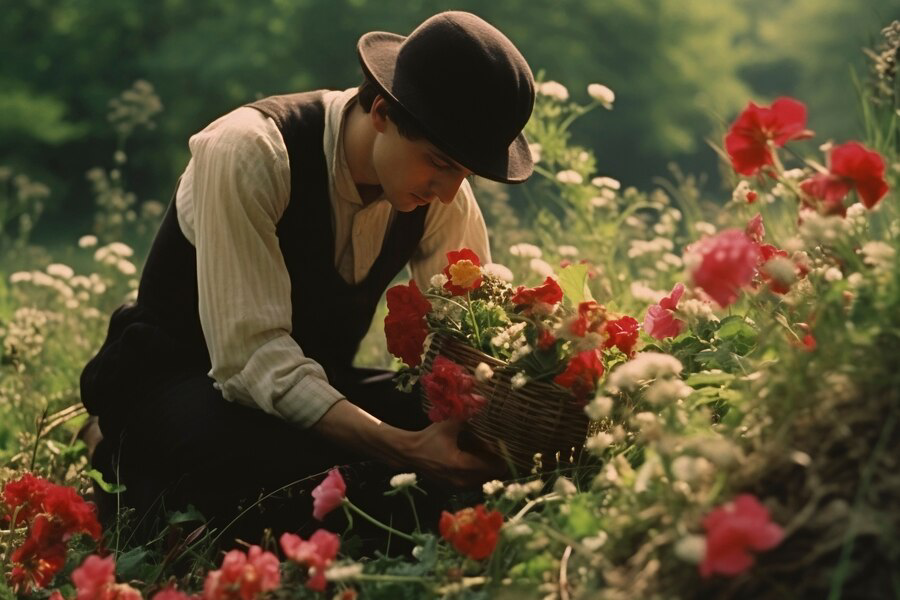Are you a beginner looking to start your own pollinator garden? Or maybe you’re just interested in getting some tips on how to level up your Prescott landscape game. In this blog, we’ve got you covered! We will cover everything from selecting suitable plants for your garden, creating water sources for pollinators, planting for seasonal blooms, guide to naturalized pollinator plants, and creating a hummingbird-friendly yard. We will also talk about the role of beneficial insects in your garden and how to attract them. With these essential tips, you’ll be able to create a beautiful and thriving garden that not only looks amazing but also helps support the local ecosystem.
Essential Tips for Starting Your Pollinator Garden
Get started on your pollinator garden with these essential tips. Create an inviting space that allows pollinators to thrive by providing suitable plants. Attract pollinators by including nectar-rich flowers throughout your garden. Spread awareness about the importance of pollinators using social media platforms like Walmart and Pinterest. By incorporating these tips, you can create a vibrant and buzzing ecosystem in your own backyard. Enjoy the beauty of nature while supporting the vital role that pollinators play in our environment.
Selecting Suitable Plants for Your Garden
To create a successful pollinator garden, choose native plants that thrive in your area. Plant early bloomers like crocuses, daffodils, or lilacs to provide food for pollinators after winter. Include diverse plants with different flower shapes, sizes, and colors to attract a variety of pollinators. Research the preferences of local pollinators for nectar-producing flowers. Avoid harmful pesticides to protect both pollinators and their habitats. Follow these tips to create a vibrant and welcoming garden for pollinators.
The Importance of Providing Shelter for Pollinators
Creating a garden space that offers shelter for pollinators is crucial. By including nesting areas, shrubs, and trees, you provide these beneficial creatures with a safe haven. Additionally, consider planting nectar-rich flowers, installing pollinator houses, and providing water sources to suit the needs of East Coast pollinators. Diverse vegetation in your garden attracts pollinators and ensures a variety of food sources and shelter. Remember to leave garden spaces undisturbed, allowing pollinators to find shelter in natural areas. Finally, it’s important to avoid harmful pesticides that can destroy pollinator habitats, promoting the well-being of these essential creatures.
Alternatives to Harmful Pesticides
Consider incorporating natural pest control methods, like companion planting, to minimize the reliance on harmful pesticides. Organic gardening practices, such as crop rotation, can also help deter pests while protecting pollinators. Physical barriers, such as netting, offer an effective way to shield your garden from pests without resorting to chemical pesticides. Additionally, encouraging natural predators like ladybugs can help maintain a healthy balance in your garden by controlling pest populations. Embrace the use of organic flowers that attract pollinators and repel harmful pests, creating a harmonious environment for both beneficial insects and your plants.
Incorporating a Water Source in Your Garden
Enhance your pollinator garden by adding a water source, like a birdbath, to provide hydration for pollinators. Consider installing a small pond or water feature to create an attractive and functional element in your garden. To ensure easy access for pollinators, keep the water source clean and free from debris. For safe drinking, provide shallow water sources, such as plates. Especially during hot summer months, it’s important to keep the water sources filled to promote the well-being of pollinators. By incorporating a water source in your garden, you can provide essential hydration and create an inviting environment for pollinators to thrive.

Methods to Create a Water Source for Pollinators
To create a water source for pollinators in your garden, you have various options. Use garden accessories like rocks, pebbles, and floating plants to create shallow areas for drinking. Install a drip irrigation system for a constant water source. Plant nectar-rich flowers like asters, salvias, and sedums. Place water-filled containers throughout your garden. Consider adding fountains for both beauty and hydration for pollinators.
Planting for Seasonal Blooms: An Overview
Plan for seasonal blooms in your pollinator garden to achieve year-round color and nectar sources. By selecting plants that bloom in different seasons, you can create a thriving garden that transforms with unique flowers each season. This benefits pollinators and adds beauty to your outdoor space. Create a stunning garden with blooming plants that attract pollinators throughout the seasons, making Walmart and Pinterest proud.
Choosing Plants for Different Seasons
To choose plants for your pollinator garden, consider a few factors. Opt for spring-blooming plants like tulips and daffodils to provide early nectar sources. During summer, attract pollinators with coneflowers, bee balm, and sunflowers. For fall, incorporate asters, goldenrods, and sedums to sustain pollinators. And don’t forget winter-blooming flowers like witch hazels, hellebores, and snowdrops for nectar during colder months. Plan your garden strategically to ensure a continuous supply of nectar-rich blooms year-round
Guide to Naturalized Pollinator Plants for Your Area
Discover the advantages of incorporating naturalized pollinator plants into your garden. By using native and naturalized species, you can create garden spaces that provide essential support for local pollinators. It is crucial to select pollinator-friendly flowers that are adapted to your region’s climate and soil conditions. These plants not only enhance the habitats of pollinators but also offer a diverse range of nectar sources. By including nectar-rich, naturalized pollinator plants in your garden, you can support and attract a variety of pollinators, thus promoting biodiversity. So, embrace the beauty and benefits of these plants that flourish in your area.
Understanding Local Plant Species and Their Benefits
To create a pollinator garden that attracts bees and butterflies, research the local plant species in your area. These plants cater to pollinators and provide important food sources throughout the year. By planting local species, you ensure a resilient and thriving garden, while supporting pollinators and contributing to their survival.
How to Create a Hummingbird-Friendly Yard
To attract hummingbirds to your yard, create nectar-rich garden spaces with vibrant flowers like salvias and honeysuckles. Plant early spring bloomers like columbines and bleeding hearts to provide food for migrating hummingbirds. Share your hummingbird-friendly garden on social media to inspire others. Incorporate bonsai trees as perches for hummingbirds. Plant a variety of flowers to attract pollinators and ensure a continuous food supply. Let the colorful and delicate movements of hummingbirds make your yard an inviting oasis.
Plants That Attract Hummingbirds
To attract hummingbirds, include trumpet-shaped flowers like honeysuckle and native flowers like cardinal flower. Brightly colored flowers such as fuchsia also catch their attention. Choose long-blooming flowers like salvia for a continuous food source. To attract different hummingbird species, offer nectar-rich flowers like bee balm. Create an inviting space in your garden with these plants to attract these delightful creatures.
Understanding the Role of Beneficial Insects in Your Garden

In a garden ecosystem, it is crucial to differentiate between beneficial insects and harmful pests. These beneficial insects play a vital role in maintaining the health and balance of your garden. One important group of beneficial insects is pollinators, such as bees. Without them, the process of pollination wouldn’t occur, leading to a significant decline in plant reproduction and overall biodiversity. Another group of beneficial insects includes natural predators like ladybugs, which control the population of garden pests by feeding on them. Beneficial insects contribute to garden biodiversity by creating a diverse and sustainable ecosystem. Additionally, decomposers like earthworms aid in nutrient cycling by breaking down organic matter. By understanding the importance of these beneficial insects, you can enhance the health and productivity of your garden.
Distinguishing Between Beneficial and Harmful Insects
In order to identify beneficial insects like lacewings, it’s important to observe their physical characteristics. By differentiating between pest insects such as aphids and their natural enemies, you can better understand which insects are harmful to your garden. Take note of the feeding habits of the insects to determine whether they are beneficial or harmful. Educating yourself on common garden pests and their impact on plant health will also help you make informed decisions. To encourage the population of beneficial insects, it is advisable to avoid the use of pesticides. Remember, fostering a healthy ecosystem in your garden will lead to more effective pest control.
How to Attract Beneficial Insects to Your Garden?
To attract beneficial insects to your garden, plant a variety of flowering plants like ladybugs, lacewings, and bees. Avoid harmful pesticides and provide habitats for these insects by leaving some areas undisturbed or adding insect houses. Companion planting techniques can also help attract and support beneficial insects.
Conclusion
To create a thriving landscape in Prescott, consider the needs of pollinators and the environment. Choose suitable plants, provide shelter, and avoid harmful pesticides to create a pollinator garden that supports the local ecosystem. Add a water source, plant for seasonal blooms, and understand local plant species for a more beautiful and functional garden. Attract hummingbirds with specific plants and maximize rainfall by using rainwater. Grow culinary herbs and understand beneficial insects for sustainable landscaping. Contact us today for more information on Prescott landscaping. Happy gardening!











